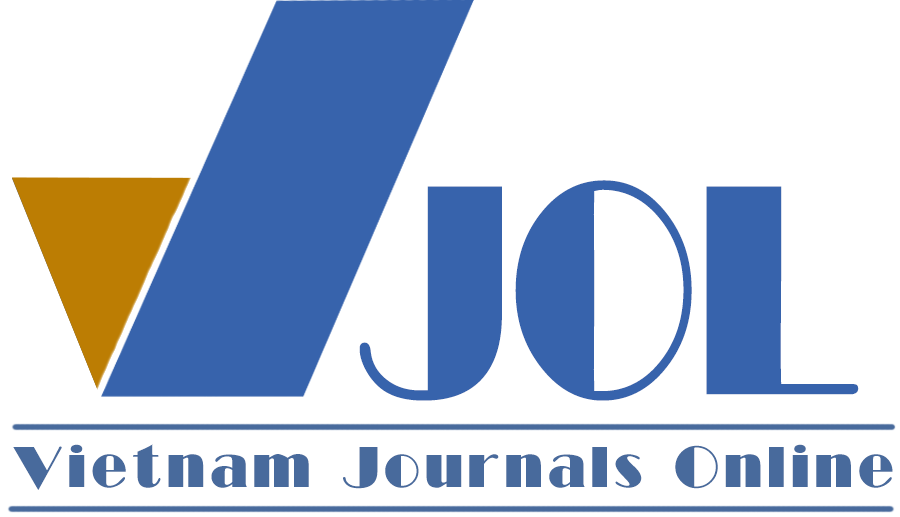The influence of human resource management practices on capacity of logistic and supply chain in Vietnam
Authors
DOI: https://doi.org/10.57110/vnu-jeb.v5i3.474Keywords:
Human resource management practices, capacity of logistic, supply chain, Vietnamese logistics enterprisesReferences
Ahlstrom, D., Bruton, G., & Chan, E. (2001). HRM of foreign firms in China: The challenge of managing host country personel. Business Horizons, 44(3), 59-68. https://doi.org/10.1016/S0007-6813(01)80036-7
Bookbinder, J., & Tan, C. (2003). Comparison of Asian and European logistics systems. International Journal of Physical Distribution & Logistics Management, 33(1/2), 36-58. http://doi.org/10.1108/09600030310460990
Cakar, F., Bititci, U., & MacBryde, J. (2003). A business process approach to human resource management. Business Process Management Journal, 9(2), 190-207. http://doi.org/10.1108/14637150310468
Chand, M., & Katou, A. (2007). The Impact of HRM practices on organisational performance in the Indian hotel industry. Employee Relations, 29(6), 576-594. https://doi.org/10.1108/01425450710826096
Cho, J., Ozment, J. & Sink, H. (2008). Logistics capability logistics outsourcing and firm performance in an e-commerce market. International Journal of Physical Distribution & Logistics Management, 38(5), 336-359. https://doi.org/10.1108/09600030810882825
Delaney, J. E., & Huselid, M. (1996). The impact of human resource management practices on perceptions of organizational performance. Academy of Management Journal, 39(4), 949-969. http://doi.org/10.2307/256718
Ding, M. J., Kam, B. H., & Lalwani, C. S. (2012). Operational routines and supply chain competencies of Chinese logistics service providers. The International Journal of Logistics Management, 23(3), 383-407. http://doi.org/10.1108/09574091211289237
Fey, C. F., Morgulis-Yakushev, S., Park, H. J. & Björkman, I. (2009). Opening the black box of the relationship between HRM practices and firm performance: A comparison of MNE subsidiaries in the USA, Finland, and Russia. Journal of International Business Studies, 40(4), 690-712. http://doi.org/10.1057/jibs.2008.83
Hong, J., Chin, A. T. H., & Liu, B. (2007). Logistics service providers in China: Current status and future prospects. Asia Pacific Journal of Marketing and Logistics, 19(2), 168-181.
Islam, M., & Siengthai, S. (2010). Human resource management practices and firm performance improvement in Dhaka export processing zone. Research and Practices in Human Resource Management, 18(1), 60-77.
Kam, B. H., Tsahuridu, E., & Ding, M. J. (2010). Does human resource management contribute to the development of logistics and supply chain capabilities? An empirical study of logistics service providers in China. Research and Practices in Human Resource Management, 18(2), 15-34.
Kamoche, K. (2007), Strategy, knowledge, appropriation and ethics in HRM. In Human Resource Management: Ethics and Employment. Oxford University Press. http://doi.org/10.1093/oso/9780199203789.003.0016
Karami, A., Analoui, F., & Cusworth, J. (2004). Strategic human resource management and resource-based approach: The evidence from the British manufacturing industry. Management Research News, 27(6), 50-68. http://doi.org/10.1108/01409170410784202
Mondy, W., & Noe, R. (2008). Human Resource Management (10th ed.). Prentice-Hall.
Mothilal, S., Gunasekaran, A., Nachiappan, S. P., & Jayaram, J. (2012). Key success factors and their performance implications in the Indian third-party logistics (3PL) industry. International Journal of Production Research, 50(9), 2407-2422. http://doi.org/10.1080/00207543.2011.581004
MSUGRT. (1995). World class logistics: The challenge of managing continuous change. Council of Logistics Management.
Ngai, E. W. T., Chau, D. C. K., & Chan, T. L. A. (2011). Information technology, operational, and management competencies for supply chain agility: Findings from case studies. The Journal of Strategic Information Systems, 20(3), 232-249. http://doi.org/10.1016/j.jsis.2010.11.002
Qureshi, M. N., Dinesh, K., & Pradeep, K. (2008). An integrated model to identify and classify the key criteria and their role in the assessment of 3PL services providers. Asia Pacific Journal of Marketing and Logistics, 20(2), 227-249. http://doi.org/10.1108/13555850810864579
Ross, D. F. (2002). Introduction to e-supply chain management: Engaging technology to build market-winning business partnerships. CRC Press.
Rubino, J. A. (1997). A guide to successfully managing employee performance: Linking performance management, reward systems, and management training. Employment Relations Today, 24(2), 45-53.
Shang, K. C., & Marlow, P. B. (2007). The effects of logistics competency on performance. Journal of International Logistics and Trade, 5(2), 45-66. https://doi.org/10.24006/jilt.2007.5.2.45
Swafford, P. M., Ghosh, S., & Murthy, N. (2006). The antecedents of supply chain agility of a firm: Scale development and model testing. Journal of Operations Management, 24(2), 170-188. http://doi.org/10.1016/j.jom.2005.05.002
Wang, Q., Chu, Z., Zhou, Q., & Lai, F. (2008). A comparative study of third-party logistics in Mainland China and Hong Kong. Transportation Journal, 47(3), 48–58. http://doi.org/10.5325/transportationj.47.3.0048
Valle, R., Martin, F., & Romero, P. M. (2000). Business strategy, work processes and human resource training: Are they congruent? Journal of Organizational Behavior, 21(3), 283-297. http://doi.org/10.1002/(SICI)1099-1379(200005)21:3%3C283::AID-JOB16%3E3.0.CO;2-C
Downloads
Additional Files
Published
Abstract View
PDF Downloaded
How to Cite
Issue
Section
License
Copyright (c) 2025 Nguyễn Thị Minh Nhàn, Nguyễn Thị Bích Loan

This work is licensed under a Creative Commons Attribution-NonCommercial 4.0 International License.
by VNU Journal of Economics and Business






